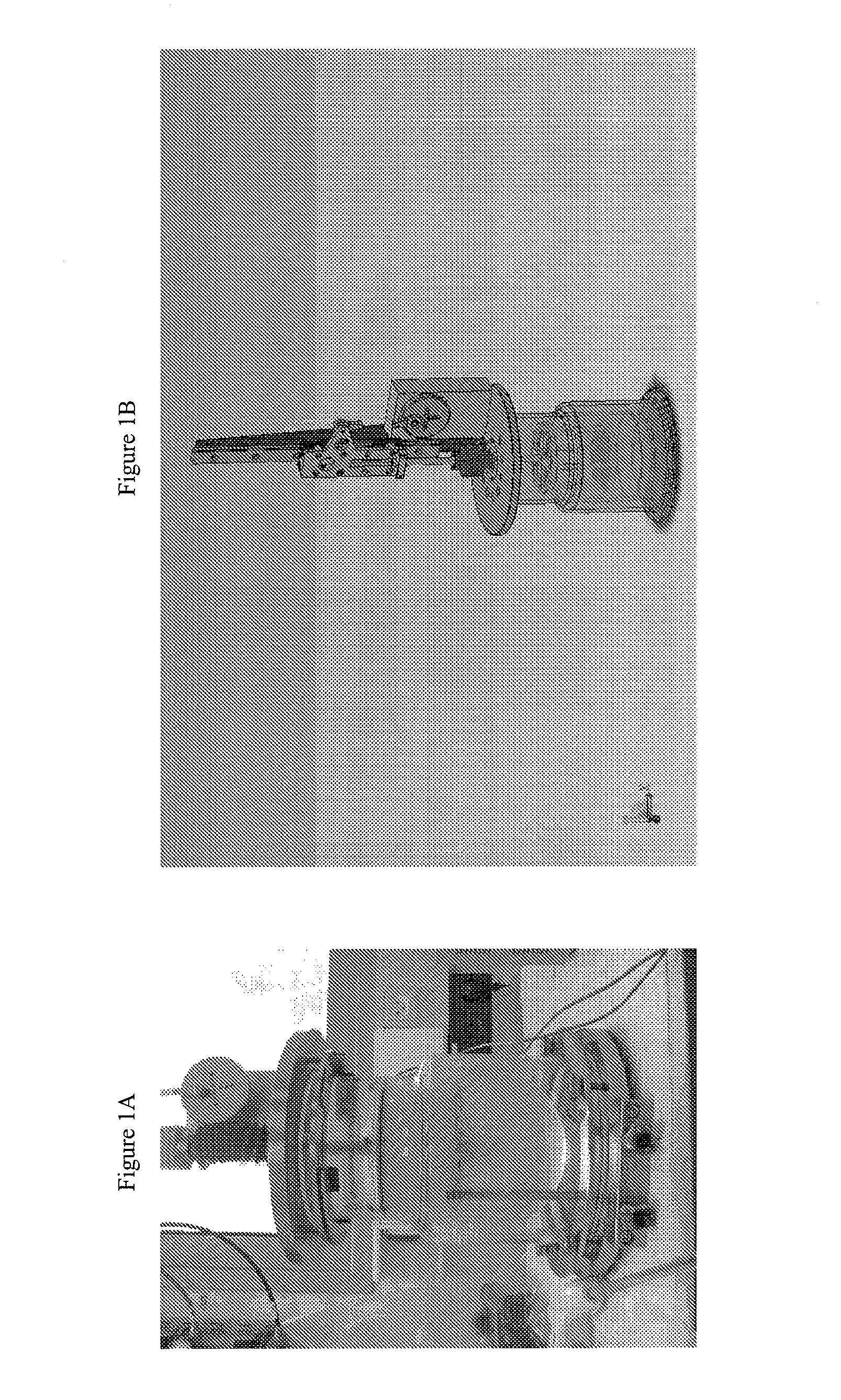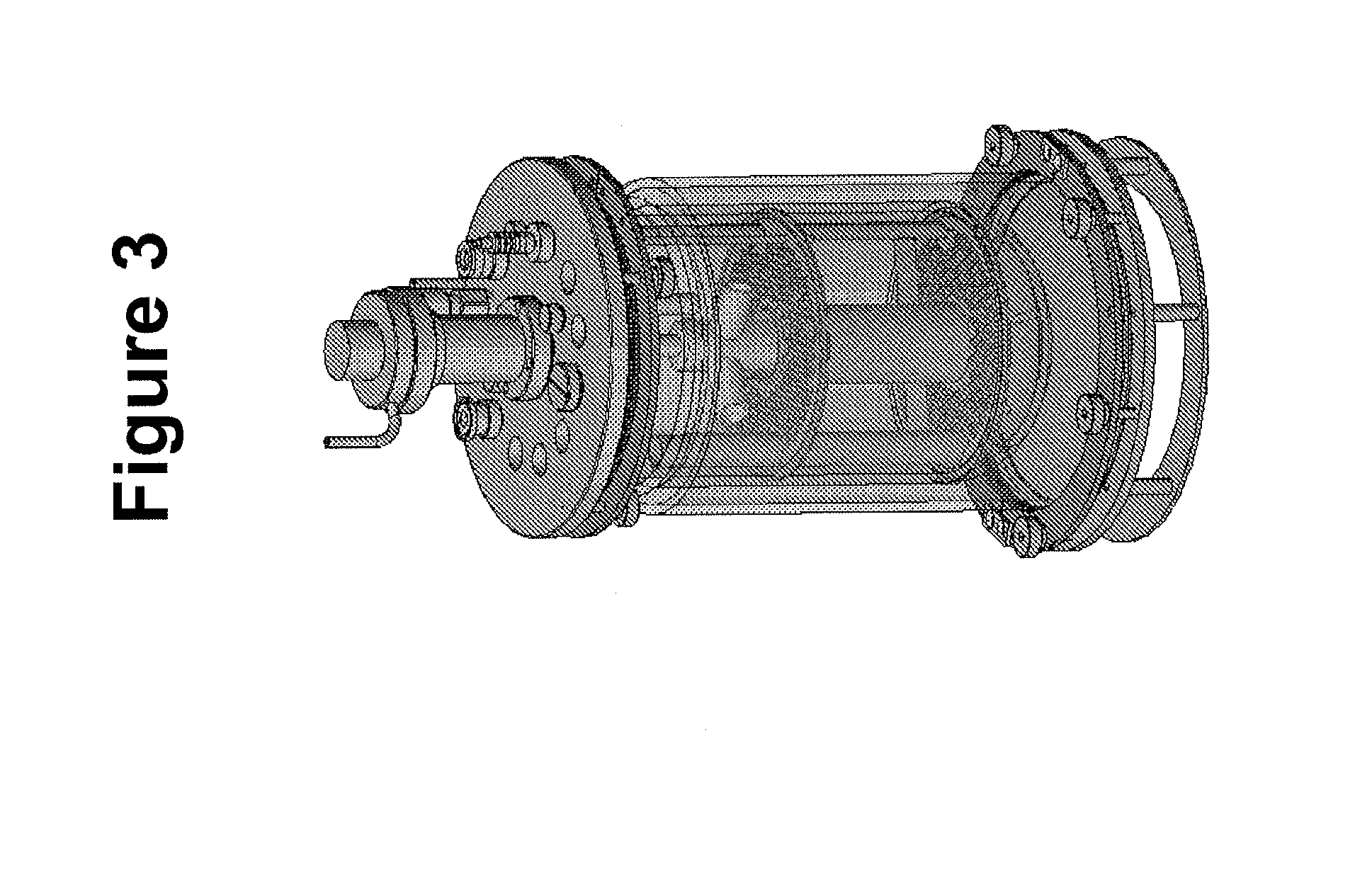Methods and systems for harvesting cells
a technology of cells and cultures, applied in the field of methods and systems for harvesting cells grown in culture, can solve the problems of inefficiency of the process, discomfort and risk involved in the procedure for obtaining ascs, and the difficulty of isolating large quantities of normally occurring populations of adherent stromal cells
- Summary
- Abstract
- Description
- Claims
- Application Information
AI Technical Summary
Benefits of technology
Problems solved by technology
Method used
Image
Examples
example 1
[0142]At the end of growth phase the carriers were washed as described above and transferred to the harvest system basket. The carriers were incubated in TrypLE for 32 minutes while vibrating the basket at low frequency (0.7 Hz). Every 3 minutes the basket was vibrated for 1 minute at a different frequency (Hz) and amplitude (mm), as specified in Table 1. At each time point a sample of 5 ml cell suspension was collected to a 50 ml centrifuge tube and the number of cell was counted using the Cedex instrument.
TABLE 1Harvest system parametersTime (minute)48121620242832Voltage (volt)242431.17.113.414.214.214.2Frequency (Hz)667.81.83.43.63.63.6Amplitude1212122525252525(mm)Basket positionhighhighhighhighlowlowlowlow
[0143]The effect of the harvesting parameters (time, frequency, and amplitude) on the cell concentration in the harvesting liquids are shown in FIG. 10. Although amplitude was changed during the incubation period (after 16 minutes), the results show that using an amplitude of 2...
example 2
[0144]At the end of growth phase (6 days) the carriers were washed and transferred to the harvest system basket. The carriers were incubated in TrypLE for 20 minutes while moving the basket at amplitude of 25 mm and low frequency (0.7 Hz). Every 4 minutes the basket was vibrated for 1 minute at amplitude of 25 mm and a frequency of 6 Hz. At each time point, a sample of 5 ml cell suspension was collected to a 50 ml centrifuge tube containing 1 ml FBS. The cell suspension was centrifuged and the cells resuspended in 1 ml of medium (DMEM with 10% FBS and 25 mM HEPES) and counted using the Cedex instrument.
[0145]The effect of harvesting time on the cell number in the 5 ml sample is shown in FIG. 11. It can be seen that when the harvest system was operated in amplitude of 25 mm and frequency of 6 Hz, the number of cells counted in the solution after 5 min was not increased over time.
[0146]In another experiment, the carriers were sampled at the end of the growth phase (before harvest) and...
example 3
[0148]At the end of the growth phase (7 days), the carriers were washed and transferred to the harvest system basket. The carriers were incubated in TrypLE for 8 minutes while shaking the basket at amplitude of 25 mm at low frequency (0.7 Hz). After 8 minutes of incubation the basket was shaken for 1 minute at an amplitude of 25 mm in a frequency of 3 Hz or 6 Hz, as specified. At each time point, a sample of 5 ml cell suspension was collected to a 50 ml centrifuge tube containing 1 ml FBS. The cell suspension was centrifuged, and the cells were resuspended in 1 ml of medium and counted using the Countess instrument.
[0149]The effect of harvesting frequency and time on the cell number in a 5 ml sample is shown in FIG. 13. It was found that during 1 min. in amplitude of 25 mm, frequency of 6 Hz was more efficient in harvesting than frequency of 3 Hz.
[0150]In another experiment, the carriers were sampled at the end of the growth phase (before harvest) and at the end of the harvesting pr...
PUM
| Property | Measurement | Unit |
|---|---|---|
| frequency | aaaaa | aaaaa |
| frequency | aaaaa | aaaaa |
| frequency | aaaaa | aaaaa |
Abstract
Description
Claims
Application Information
 Login to View More
Login to View More - R&D
- Intellectual Property
- Life Sciences
- Materials
- Tech Scout
- Unparalleled Data Quality
- Higher Quality Content
- 60% Fewer Hallucinations
Browse by: Latest US Patents, China's latest patents, Technical Efficacy Thesaurus, Application Domain, Technology Topic, Popular Technical Reports.
© 2025 PatSnap. All rights reserved.Legal|Privacy policy|Modern Slavery Act Transparency Statement|Sitemap|About US| Contact US: help@patsnap.com



